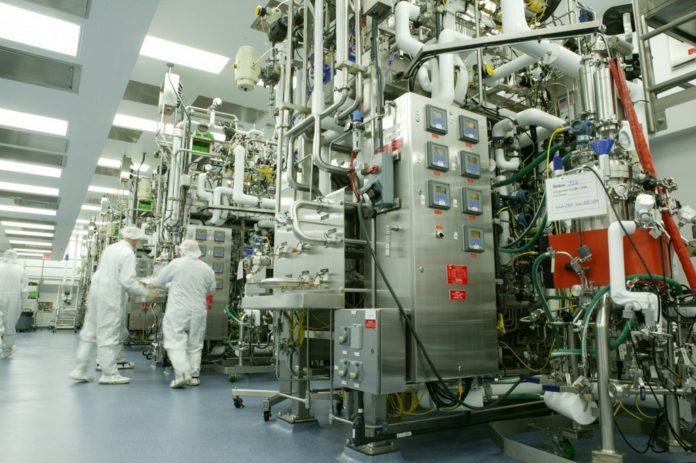
WEST GREENWICH – As part of the restructuring that aims to save more than $1 billion companywide in 2008, Amgen Inc. (Nasdaq: AMGN) expects to reduce its Rhode Island work force of 1,600 in the coming year, although the final number of reductions has not been determined, a company spokesman said today.
The company’s plan to reduce its personnel costs by 12 percent to 14 percent and slash research and development expenditures is the result of slowing sales of the Amgen’s biggest moneymaker, the anemia drug Aranesp, according to Bloomberg News. The job cuts will be the first in the company’s 27-year history and could total as many as 2,600 workers companywide.
Accompanying the local job reduction, Amgen said, will be the closure of the older of two manufacturing plants the company operates at its West Greenwich campus.
Both facilities manufacture Enbrel, Amgen’s rheumatoid arthritis drug, with workers currently rotating between the two plants as needed.
Amgen is offering buyouts to eligible workers in West Greenwich, which may be followed by further layoffs, said Larry Bernard, a company spokeman.
“We’ll see how that program runs before we can figure out how many people will be affected by the involuntary reduction,” he said.
The other factor that will determine how many local Amgen position are eliminated will be the number of job cuts in other areas of the company, Bernard said.
“We don’t know what numbers will be affected,” he said. “But we will still have a large manufacturing capability here, and we’re still committed to Rhode Island and to the site.”
Amgen – the world’s largest biotechnology company – finds itself in the same spot as big conventional drugmakers including Pfizer Inc. and Merck & Co., as it is forced to find new drugs to replace older, top-selling products. Payment limits for Amgen’s anemia drugs, set by insurers, and safety warnings from U.S. regulators threaten to cut the company’s revenue by $1.3 billion this year.
“They do realize the Aranesp anemia franchise can’t be a long-term carrier of growth,” Sven Borho, a portfolio manager with Orbimed Advisors in New York, which owns 5 million Amgen shares, told Bloomberg News. “They need something else.”
Amgen derived almost half of its $14.3 billion in 2006 sales from anemia drugs Aranesp and Epogen.
The Thousand Oaks, Calif.-based company has been working to diversify beyond the anemia drugs for more than five years, Amgen Chief Executive Officer Kevin Sharer said during a conference call late yesterday.
The company has tripled its spending on research and development over five years, to $3.4 billion in 2006, according to data compiled by Bloomberg.
It also has acquired products. For instance, it bought Seattle-based Immunex Corp. in 2002 to get Enbrel. The drug generated U.S. sales of $2.7 billion in 2006. At the time of the acquisition, Amgen was predicting $3 billion in Enbrel sales by 2005.
Amgen Inc. (Nasdaq: AMGN) – based in Thousand Oaks, Calif., with operations in 10 other U.S. locations, including West Greenwich – develops and produces new medicines for human use. Additional information is available at www.amgen.com.










